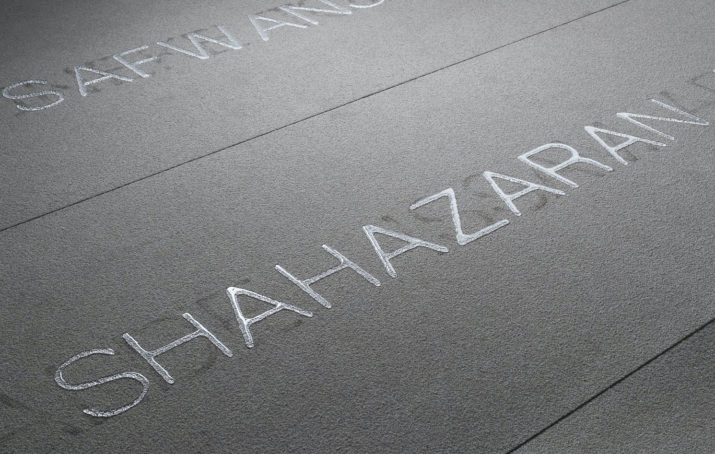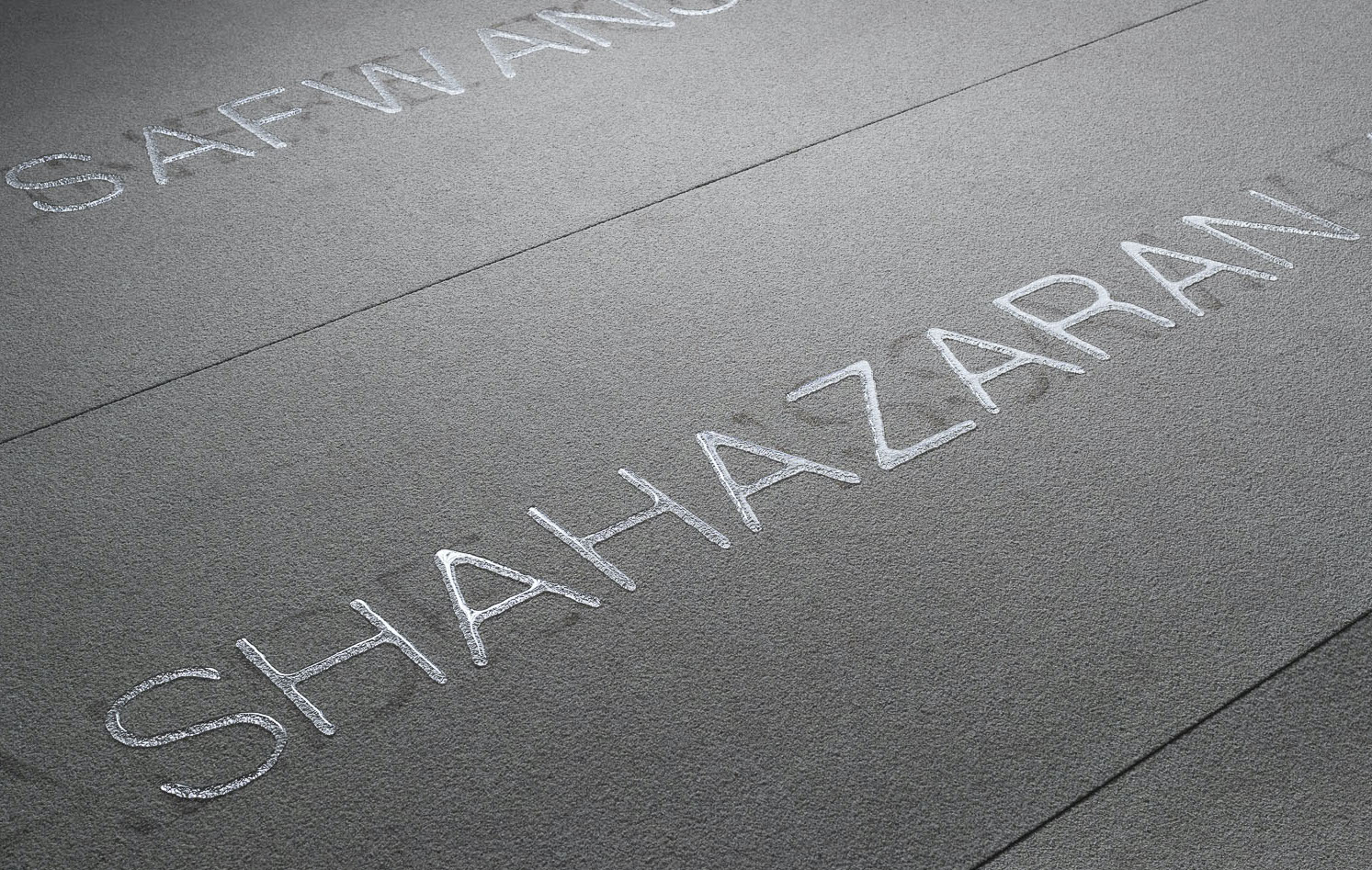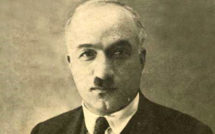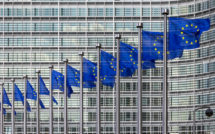

This is part of our special feature on European Art, Culture, and Politics.
The persistence of migrants’ death on their way to Europe through the last two decades poses a challenge to the political and administrative forces of the continent, but their implications go far beyond those spheres. Most undocumented travelers die or go missing in circumstances where the usual institutional and symbolical frameworks to elaborate a death are unavailable or inadequate. Their deaths are traceless and take place out of sight, in the remoteness of seas and deserts, as clandestinely as the journey itself.[i] These conditions make the chains of responsibility and accountability for those deaths complicated and difficult to track. The role of geography and environmental factors contributes to the apparent lack of agency behind those “crimes of peace.”[ii] Scholars have argued that, whether an unwanted outcome or the product of a rather systematic procedure, this life loss should be traced back to restrictive border and migration policies where the state is the primary actor involved.[iii] The political responsibility extends to the administrative aspects related to the due treatment of the perished: body identification, issuing of death certificates, and repatriation or adequate burial of the dead are often conducted precariously and without clear protocols.[iv] The mobile and transnational character of those deaths and disappearances, which take place in transit between different national sovereignties and jurisdictions, adds to the difficulties of finding, identifying, and adequately taking care of the deceased or missing person.
Beyond those institutional aspects related to the institutional treatment and political accountability for border related deaths, there is an affective and representational dimension that concerns the global and, especially, European audiences. This sphere touches problems of visibility and mourning, insofar as they convey the question of whether lives are grievable and valued as such, and are therefore no less political.[v] How to point out at deaths and distress endured in the context of migration? What languages and means are the appropriate? Critical border and migration scholars have warned about the effects of the “border spectacle,” which places the focus on event-related and visually compelling images while silencing other forms of violence that may not be so easily codified by the media.[vi] Such episodic, isolated references to border-related deaths should be put in relation to the rather invisible, daily, silent forms of harm that criminalized travellers are exposed to on their journeys to Europe.[vii] This sort of politically charged suffering may be better framed by Rob Nixon’s conceptualization of slow violence: “a violence that occurs gradually and out of sight,” and is “dispersed across time and space;” an “attritional violence that is typically not viewed as violence at all.”[viii] The media bias towards spectacular violence poses thus a strategic and representational challenge: how to translate into images and narratives disasters that are itinerant in space and long in the making.
The two approaches from the arts discussed here propose divergent, albeit powerful answers to those questions. Stemming from non-European artists firmly established in the global circuit, they resort to symmetrically opposite and maybe complementary approaches to the uncertainties of lives lost in the context of migration: the installations of Ai Weiwei that foreground the materiality of life jackets and dinghies, and a work by Doris Salcedo based on the mandate to remember and honor the dead by writing, if ephemerally, their names.
Matter and Metonymy: Ai Weiwei’s large-scale monuments
In recent years, both research and the arts have been paying increasing attention to the entangled materiality of border making. Border and migration scholars have focused on the ways in which infrastructures and logistics play a decisive role in border enforcement and in migration transits. This framing allows an overcoming of the limitations of approaches based on the “state-container” assumption, while acknowledging the effects of more-than-human actants upon social life. Instead of looking at fences, walls, and enforcement measures, the emphasis shifts towards routes, corridors, vehicles and organizational aspects of border crossing. Infrastructures and materiality are thus seen as key elements of border making that deserve attention as research objects in their own right. Together with the influence of scholarly tendencies such as the “material,” “infrastructural” or “logistical” turns, this shift responds to the awareness that, if migration routes imply more complicated routes and take longer time, the trajectory itself should be at the center of interest. As the journey across countries—or “transit migration”—receives greater research attention, so do the objects and infrastructures mobilized for a life on the move. Vehicles are seen as “mobiles zones of governance and contestation in their own right” and corridors regarded as “political and technocratic interventions” with an entity of their own.[ix] Across and beyond state sovereignties, transportation means and logistical devices become a decisive stage where the right to mobility is being disputed.
The installations of the Chinese artist Ai Weiwei using lifejackets and boats foreground these very material artefacts as testimony to the material precariousness of refugees’ travels. Under the title “#safepassage” in 2016, Ai covered the front columns of the Konzerthaus on the Gendarmenmarkt in Berlin with thousands of jackets previously worn by refugees trying to reach Europe. The neoclassical façade of the building, conveying European stability and tradition, was interrupted with the material markers of the precariousness and risk of refugees’ journeys. If the new-materialisms set the conceptual frame for a deeper engagement with the instruments and logistics of travel, the accumulation of discharged objects on the Greek islands during the peak of refugee arrivals from Turkey in 2015 provided the substance for Ai’s monumental interventions. The hoard of leftovers piling up on the shores overstrained the local waste management but offered a powerful document for those who chose to see those pieces as a testimony of suffering at the gates of Europe. Ai’s works aimed at making those individual and collective fates visible in the center of the continent, contrasting these desperate conditions of travel with the proud symbols of European culture. After the Berlin inauguration, variations of #safepassage were installed on the external walls of Copenhagen’s Kunsthal Charlottenbor in 2017, and rings of five lifejackets were used as “floating lotus blossoms” on the pond in front of the Belvedere Museum in Vienna in 2016.[x]
The installations point out to the unknown fate of the travelers by suggesting their absence, each piece speaking for an existence in flight. The artist resorts to metonymy by substituting the migrants or refugees by an object contiguous and closely associated to them: Instruments of survival, the life jackets take the place of their bodies and are to speak out their ordeals.
The rhetorical operation evokes both the single individual itinerary—the different traces of use and exposure that turn each of the thousands of pieces unique—and the magnitude of the flight across borders expressed by the immense number of objects displayed.
Ai Weiwei had made us of the metonymic operation previously, like in his prominent Remembering (2009), where thousands of backpacks were meant to remember the children who died in the earthquake of Sichuan in 2018. And he would do it later with Laundromat (2018), where he meticulously staged thousands of clothing items and accessories left behind by refugees when the makeshift camp of Idomeni, near the Greek-Macedonian border, was shut down in 2016.[xi]Probably the most direct gesture of metonymic substitution, though, was the portrait of himself staged in the place and the position in which the Alan Kurdi, the three year old Syrian boy drowned in the Aegean, was found and photographed on a Turkish beach. Either if evoking Ai’s own biographic experience as a child of exiles, or suggesting to the viewers that everyone should put her or himself in the place of the dead migrants, the action placed the artist’s body at the center of the work. This gesture has been regarded critically as taking a step forward in Ai’s tendency to conflate his artistic persona with his work. Since he became a global celebrity, in this view, his body “has become inseparable from the affect of his art.”[xii] It is thus legitimate to ask if indeed the powerful dispositive of enunciation Ai is relying on, and the grandiloquence of his installations, may reproduce and amplify this overlapping, thus creating a situation where the artist’s self-staging does overshadow the artistic message.
The emphasis on the instruments of transportation was prominent again in Law of the Journey, a gigantic replica of the inflatable boats used by refugees filled with faceless figures and flanked with quotes of prominent thinkers and photographs from Ai’s research, which was shown at the Sydney Biennale in 2018. Here there is no substitution but a direct and figurative language—the work seems to reproduce the scale of the refugee’s catastrophe through a large-scale object. The continuity is now between the monstrous size of the boat and the dimension of the suffering at stake.[xiii]
The force of the sheer numbers in the lifejackets installations, the oversize reproduction of the dinghy boats, are to speak for the refugees’ agonic journey. Compelling in their message, the works however leave open the question about the individual fates and weighs down the single biographies under an anonymous mass, part of an undetermined human flow. In the end, the viewers do not get to know whether the lifejackets carriers survived the passage or not.
The act of mourning: Doris Salcedo’s Palimpsest
Doris Salcedo’s Palimpsest creates a silent, meditative act of mourning by permanently inscribing and erasing the names of persons drowned in their attempt to reach Europe. The Columbian artist had largely engaged with questions of trauma, grief and memory, in relation both to political violence in her country and to larger global issues. She had struck the public and achieved larger international acclaim when she opened a 167m long rift into the floor of the Tate Modern’s Turbine Hall: a synthetic and powerful statement that conveys the gap of global and class inequality as much as the persistence of the colonial wound (Shibboleth, 2007). In her public interventions about the work Salcedo related the crack to the experience of the immigrants in Europe, evoking their exposure to separation and borders.
Palimpsest takes the viewer’s attention to the floor level again: The installation consists of light grey stone slabs, positioned on the ground of the entire space, on which the names of migrants who died on route temporarily and intermittently appear. The names are written with water droplets that emerge out of the stone. The letter shaped water stays for a short while making each name readable, and then disappears again to give place to the next one. The installation was first presented in the Palacio de Cristal, an impressive iron and glass structure belonging to the Reina Sofía Museum and located at the Retiro Park in Madrid. The grandeur of the building echoes Spain’s colonial past and stands in contrast to the dispossession and precariousness that permeate migrants’ lives and flights. The glass walls let the external light and weather impact on the work, recalling the exposure to the elements the migrants are exposed to on their journey.
Evoking the coming and going of a tide, the cyclic appearing and disappearing of the letters may also suggest the cyclical nature of violence and forgetting. Like in a palimpsest, names are being written and erased once and again and layers over layers succeed as tragedies over tragedies intermittently appear and disappear in the news. The effect of the drops emerging from the floor, as if the earth would be weeping, connects with the materiality of water and with the act of grief. Doris Salcedo referred to her art as one aimed at creating a topology of mourning and to Palimpsest as a work meant to weep, “performing the grief we are not able to do.” Her hope, she wrote, was for the work to perform a role “similar to that of the funeral oration.”[xiv] An exploration on the possibilities for a poetics of mourning, where public grief becomes an act of resistance against the unmourned state of dehumanized victims.[xv] Naming their names may restore the dignity of those who failed to achieve a dignified life and lacked a dignified death as well, thus countering the social forces that lead to their dehumanization.
Rather than representing loss or grief, the aim was to open a possibility for the experience of mourning. Visitors must put on plastic shoe covers before entering, as if stepping into a sacred place. The installation created indeed a consecrated area, a space for mourning in the most political sense. For Palimpsest reminds us with Judith Butler that grief is not privatizing but primarily political, once it “furnishes a sense of political community” and brings to the fore fundamental relational ties.[xvi]
The technical elaboration of Palimpsest was enormously complex; several engineers designed the hydraulic system that pumps the water beneath the plaques, and programmed them digitally to follow a pattern that emulates the impulses of brain activity.[xvii] The greatest difficulty, according to the artist, was not to achieve this technical prodigy though but to collect the names: a task that, as she learned when she started asking, no European institution is undertaking and which took her five years. Salcedo and her team put immense care into finding not only the names but “the life behind each name” so that “they don’t get lost in the mass of numbers of persons deceased trying to reach Europe.”[xviii] They contacted several civil organizations, conducted fieldwork in Greece, and looked in Syrian, Egyptian, Turkish and European press. Only names that could be checked with three different sources were included. Salcedo wanted the names to reflect a diversity of countries of precedence and motivations for the flight, and tried to integrate information related to the individual lives “otherwise, we would just be stuck with statistics.”[xix]
The reconstruction of the list with the names is not mentioned explicitly in the documentation that accompanies the installation. The enormous research work behind the installation remains invisible, like the ten kilometers of pipes underneath the stone slabs. In terms of enunciation the process and elaboration of the work are here separated from the body of the work. However, the care and effort put into compiling the names, and the stories they carry with them, possibly confer broader resonance and a deeper transcendence to Palimpsest. A silent and dedicated task that no EU organ or government has so far aimed to undertake.
Slow violence and the languages of absence
The increasingly long and convoluted migratory routes that lead illegalized migrants to Europe produce a form of slow violence; one that is extended in time and dispersed in space. Its effects expand beyond geopolitical borders and reach the open surfaces of deserts and seas where persons in transit endure radical forms of political and physical abandonment.
Neither spectacular nor eventful, slow violence demands representational strategies that go beyond “instant sensational visibility.”[xx] Ai’s and Salcedo’s works are attempts at rendering the absence otherwise visible, even if each via a completely different approach. While Ai Weiwei installations are displayed monumentally, Palimpsest’s funeral prayer may be closer related to the aesthetics of the “counter-monument:” interventions meant to interpellate the viewer and to pose questions, rather than to transport certainties in unilateral ways.[xxi] As in many cases of counter-monumental art, the viewer is not supposed to look above to vertically erected monuments, but to bow respectfully to an installation at the level of the floor. In both cases the historical genealogy of efforts made into turning mass death visible and honoring the victims can be traced: Ai’s collection of leftovers reminds the piles of objects displayed as testimony at Holocaust memorials, while Salcedo’s work reenacts the importance of inscribing the names, a recurrent gesture in all memorial art. If Ai’s life jackets are meant to evoke per metonymical contiguity the fate of the subjects who carried them on their transit, Salcedo’s subtle and powerful installation conjures up the ghostly, albeit politically charged quality of their absences. They both engaged in a search for testimonies of absence, either tracing material leftovers of the journey or reconstructing the biographical markers of each individual life ciphered in the names.
Estela Schindel is a lecturer and researcher and the academic coordinator of the Viadrina Institute for European Studies at the European University Viadrina in Frankfurt Oder. Her research interests include theories and representations of violence, (im)mobility regimes, border and borderlands studies, and biopolitics. Her current research engages with the entanglements of violence, nature, and technology in the EU border regime.
References:
[i] Heller, Charles and Antoine Pécoud. 2018. Counting migrants’ deaths at the border: From civil society counter-statistics to (inter)governmental recuperation. International Migration Institute Network Working Paper Series, 143.
[ii] Schindel, Estela. 2018. “The role of ‘nature’ at the EU maritime borders: Agency, ethics and accountability”, in Paasi, Anssi. et al. (eds.), Borderless worlds -for whom? Ethics, moralities and (in)justice in mobilities. New York: Routledge, 212-223; Albahari, Maurizio. 2015. Crimes of Peace. Mediterranean Migrations at the World’s Deadliest Border. Philadelphia: University of Pennsylvania Press.
[iii] Weber, Leanne and Sharon Pickering. 2011. Globalization and Borders. Death at the Global Frontier. Basingstoke: Palgrave Macmillan.
[iv] Kobelinsky, Carolina. 2019. Les traces des morts: gestion des corps retrouvés et traitement des corps absents à la frontière hispano-marocaine, Critique internationale 2019/2 (83), 21–39.
[v] Butler, Judith. 2004. Precarious Life. The Powers of Mourning and Violence. London: Verso.
[vi] De Genova, Nicholas et al.. 2015. Border Spectacle. In, De Genova et al. (eds) Migration and Borders, Cultural Studies, 29:1, pp. 12–14.
[vii] Schindel, Estela. 2019. Death by ‘nature’. The European border regime and the spatial production of slow violence.” In: Environment and Planning C: Politics and Space. Theme Issue: Spatial Politics of Slow Violence and Resistance.
[viii] Nixon, Rob. 2013. Slow Violence and the Environmentalism of the Poor. Cambridge: Harvard University Press, p.2
[ix] Respectively from Walters, William. 2015. “Migration, vehicles, and politics: Three theses on viapolitics”, European Journal of Social Theory, 18(4), 469-488, p.477, and Kasparek, Bernd. 2016. “Routes, Corridors, and Spaces of Exception: Governing Migration and Europe”. Near Futures Online 1, Europe at a Crossroads (March 2016), p.2.
[x] The #safepassage series later left Europe and was replicated at the entrances of the Minneapolis Institute of Art, the Santiago de Chile’s National Archive (2018), and the Yokohama Triennale (2017).
[xi] A work that resonates with Jason de Leon’s installations of items left by illegalized migrants on their route across the desert of the Mexican-US border. Here the pieces are object of a thorough anthropological meditation, and can be read rather as a continuation of the author’s ethnographic research.
[xii] Haakenson, Thomas. 2019. “The Refugee Affect: Ai Weiwei in Berlin”, Europe Now #26, April 2019. https://www.europenowjournal.org/2019/04/04/refugees-and-refusals-ai-weiwei-and-his-art-residency-in-berlin/
[xiii] The question whether the scale of a work should stand in relation with the scale of the crime it is meant to evoke has been posed, prominently, in the discussions over the Holocaust Mahnmal in Berlin: is a big areal the answer for the remembrance of genocide?
[xiv] ‘Palimpsesto’, el homenaje a los migrantes muertos en el mar de Doris Salcedo, Babelia/El País, October 3, 2017, in: https://www.youtube.com/watch?v=tt1ieb7v5DY Consulted, April 3, 2020.
[xv] Salcedo, Doris. 2015. A work in mourning. In Rodrigues Widholm, Julie and Madeleine Grynstzejn, Doris Salcedo. Chicago: Museum of Contemporary Art Chicago/The University of Chicago Press, p. 215.
[xvi] Butler, Precarious Life, p.22
[xvii] Babelia/El País, ‘Palimpsesto’.
[xviii] Babelia/El País, ‘Palimpsesto’.
[xix] Communication with the author.
[xx] Nixon, Slow violence, p.2.
[xxi] Young, James. 1993. The Texture of Memory. Holocaust Memorials and Meaning. New Haven: Yale University Press.
Photo: Detail of Doris Salcedo’s installation ‘Palimpsesto’ at the Museo Nacional Centro de Arte Reina Sofía, Madrid, 2018
Published on April 28, 2020.




